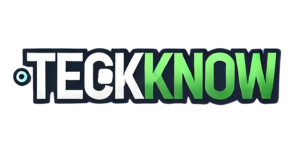JAKARTA, teckknow.com – Open Source: Harnessing Community-Driven Software Solutions isn’t just some buzz phrase—it’s literally reshaped the way I work and learn in the world of technology. I used to think open source was only for hardcore programmers (you know, the hoodie-wearing, ramen-slurping kind). Turns out, it’s waaaay more accessible than I’d assumed. And trust me, diving in changed my whole approach to problem solving.
In today’s fast-paced digital landscape, Open Source has evolved from a niche movement into a driving force behind innovation, collaboration, and cost-effective software development. Whether you’re a startup founder, CIO at a Fortune 500, or an individual developer, understanding Open Source is no longer optional—it’s essential. Here’s my unfiltered perspective on why Open Source matters, how it works, and what you need to know to leverage these community-driven solutions effectively.
What Is Open Source, Really?
At its core, Open Source means that the source code of software is made freely available for anyone to inspect, modify, and distribute. But beyond licensing, Open Source embodies:
- Transparency: You can audit every line of code—no more “black-box” software.
- Collaboration: Developers worldwide contribute features, bug fixes, and security patches.
- Freedom: Use the software for any purpose, fork it, adapt it, and share your improvements.
- Meritocracy: Contributions are judged on quality, not company size or marketing budget.
This philosophy contrasts sharply with proprietary models that lock you into vendor timelines, pricing, and feature roadmaps.
Why Open Source Delivers Real Impact
- Accelerated Innovation
- Parallel development by diverse contributors
- Rapid feature iteration without corporate red tape
- Cross-pollination of ideas between projects
- Cost Efficiency
- No upfront licensing fees for the software itself
- Avoid vendor lock-in and unpredictable upgrade costs
- Leverage free community support and extensive documentation
- Security and Reliability
- “Many eyes” principle: vulnerabilities surface and get patched faster
- Public code audits and third-party security reviews
- Proven track record: Linux, Kubernetes, and OpenSSL power critical infrastructure
- Vendor Independence
- Hire any developer familiar with the codebase
- Fork projects when priorities diverge
- Maintain full control over your technology stack
Common Open Source Success Stories
- Linux Kernel
Powers everything from web servers to Android smartphones, demonstrating that Open Source can scale to billions of devices. - Kubernetes
Revolutionized container orchestration by uniting cloud-native communities around a shared, Open Source platform. - WordPress
Empowers 40%+ of the web, proving that Open Source can dominate even consumer-facing markets. - TensorFlow & PyTorch
Democratized AI/ML development by making cutting-edge research libraries freely available.
The Hidden Challenges of Open Source
While Open Source is transformative, it’s not without pitfalls:
- Sustainability
Many critical projects rely on volunteer maintainers facing burnout. Without proper funding and sponsorship, key infrastructure may lag. - Fragmentation
Forks and competing standards can lead to interoperability headaches—choose projects with strong governance and thriving communities. - Documentation Gaps
Some Open Source tools assume deep technical expertise. Good onboarding processes and community-driven tutorials are essential. - Corporate Exploitation
Not every company gives back proportionally. Always check a project’s contribution and funding model to ensure long-term health.
How to Evaluate and Adopt Open Source Software
Before integrating any Open Source solution, consider:
- Community Health
- Active maintainers and regular releases
- Responsive issue trackers and pull-request reviews
- Clear contribution guidelines and code of conduct
- License Compatibility
- MIT, Apache 2.0, and BSD licenses for maximum flexibility
- Copyleft (GPL) licenses if you’re comfortable with share-alike requirements
- Security Practices
- Public vulnerability disclosure policies
- Automated scanning (e.g., CI pipelines with SAST tools)
- History of timely security fixes
- Maturity and Roadmap
- Production-readiness: long-term support (LTS) releases, version guarantees
- Alignment with your business objectives and technical stack
Contributing to Open Source: Why and How
Giving back to Open Source strengthens the ecosystem and advances your career:
- Start Small: Fix typos, improve documentation, or add tests.
- Learn the Workflow: Fork, clone, create feature branches, and submit pull requests.
- Engage Respectfully: Follow contribution guidelines, communicate in mailing lists or chat channels, and respond to feedback.
- Network and Grow: Your GitHub profile becomes a living portfolio—employers value real-world, public contributions.
My Final Take
Open Source is more than just “free code”—it’s a paradigm shift in how we build, share, and secure software. By harnessing community-driven solutions, you gain agility, lower barriers to entry, and tap into collective expertise. Yet success requires thoughtful evaluation, active participation, and support for the projects you rely on. Embrace Open Source with eyes wide open: the rewards can be monumental, but only if you engage responsibly and contribute to the commons you benefit from.
Don’t miss out—dive into Open Source today. Audit that library you depend on, fix a typo in documentation, or launch a pilot project on Kubernetes. The community is waiting, and the next big innovation could start with your pull request.
Boost Your Proficiency: Learn from Our Expertise on Technology
Don’t Miss Our Latest Article on Voice Assistants: Enhancing Interaction with AI!
